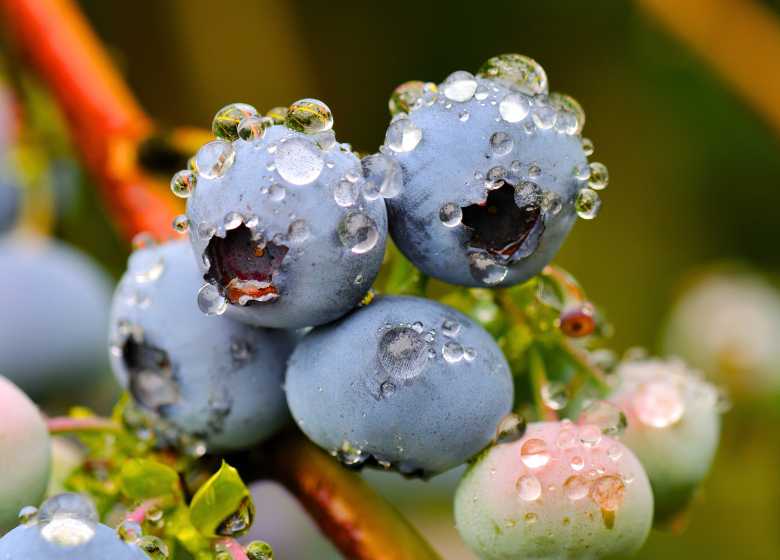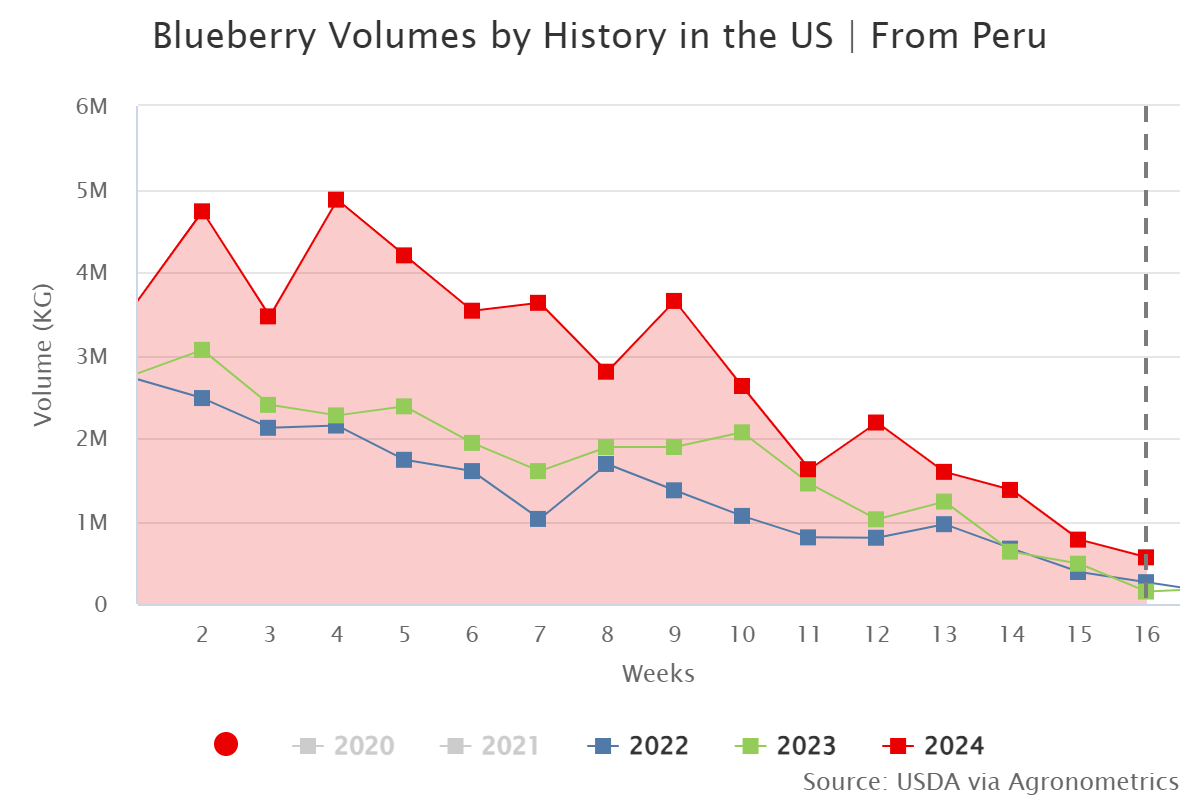With El Niño winding down, Peru looks to recover blueberry volume

Overview of blueberries from Peru in the U.S. market, complemented by charts from Agronometrics. Original published on April 22, 2024.
After a complicated 2023-24 season, hit by extreme El Niño weather conditions, Peruvian blueberries are expected to recover lost volume this year.
Ricardo Polis, regional director of South America at Fall Creek, a transnational blueberry nursery, says he expects volumes to improve as the weather transitions to a La Niña cycle and conditions slowly normalize in Peru.
“At this point, we no longer know what is normal concerning temperatures, but so far this year, weather conditions have been good,” he said.
He explained that last season, Peru exported 224,000 tons of blueberries, and the year before that, 284,000 tons.
“Next season we should get to 300,000 tons,” he said. “In Peru, we already produce 52 weeks of the year, but the most attractive weeks for exports are between August and January-February.”
Peru is the leading exporter of blueberries in the world, and the United States is its main customer. Peru provides over 44% of the blueberries imported by the U.S. every year.
In 2023, Peru exported over 240 million pounds of fresh blueberries to the USA, a big drop compared to the 323 million in 2022.

Source: USDA Market News via Agronometrics.
(Agronometrics users can view this chart with live updates here)
New varieties lead the way
Polis said blueberries are undergoing a worldwide “revolution” due to superior new varieties.
“We are talking about larger, crunchier, less acidic, and sweeter fruit that consumers will begin eating starting next season,” he said.
He said if producers don’t adapt, modernize, and adopt new varieties, they will be run out of business. Old varieties, he said, are too small, and even though they grow well in many regions, they are not what consumers are looking for.
For the grower, working with a smaller variety means double the harvesting cost, he says. And for the farm worker, picking smaller fruit means losing time. Retailers in export markets, he adds, are already being offered better fruit and they’ve lost interest in old varieties like Biloxi.
“Peru is currently working with Sekoya Beauty. For high cold requirements, as in Chile, there is Sekoya Crunch, Sekoya Grande and Sekoya Fiesta. These are revolutionary and a lot more productive than others,” he said.
The News in Charts is a collection of stories from the industry complemented by charts from Agronometrics to help better tell their story.
Access the original article with this (Link)






